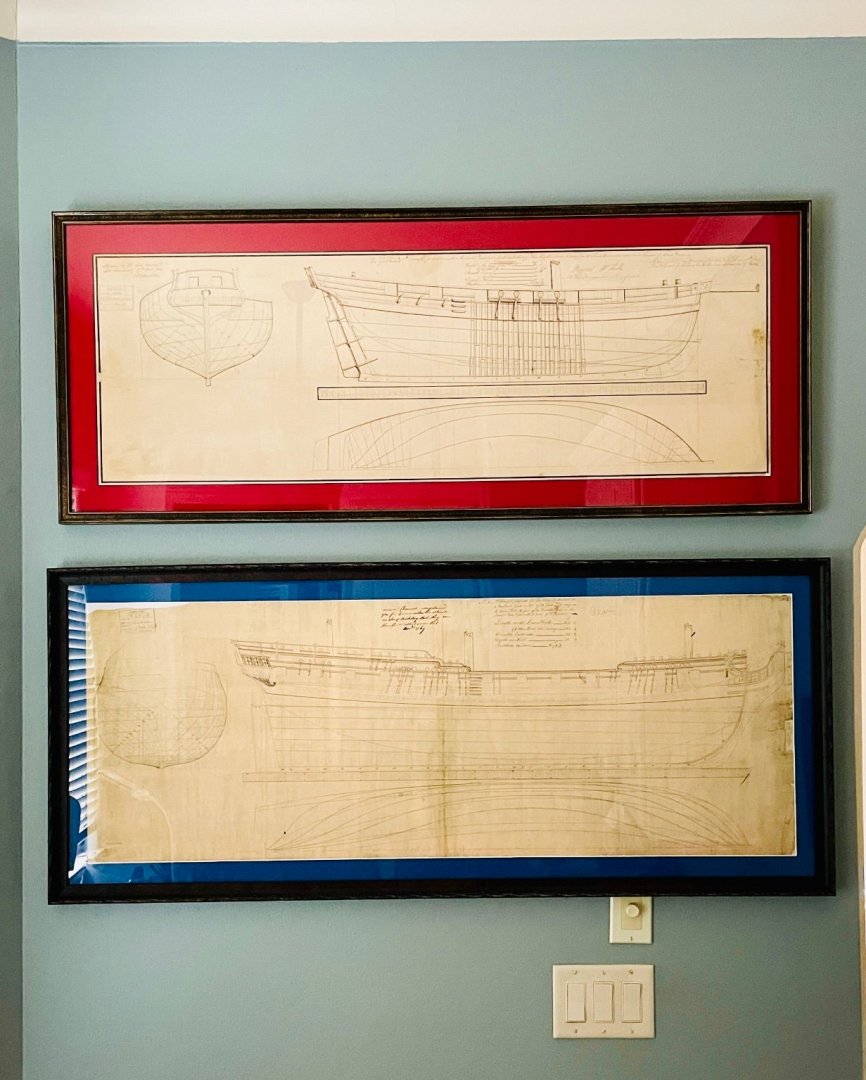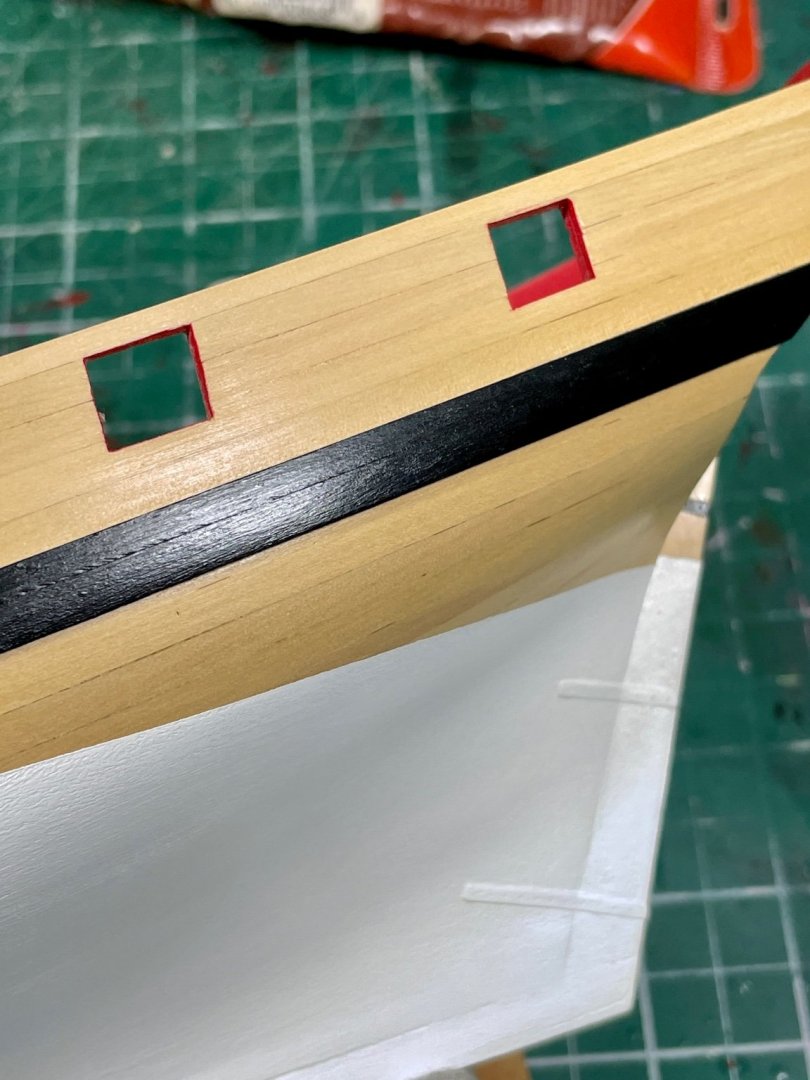-
Posts
4,015 -
Joined
-
Last visited
Content Type
Profiles
Forums
Gallery
Events
Everything posted by glbarlow
-
The Nelson and Alert are essentially the same ship, a cutter ( though not near the same quality kit). Might want to consider that in your choices.
-
I build my first model, the AVS using the practicum by Bob Hunt of Lauck Street, I highly recommend his practicums. He’s a cantankerous old dude but I learned a great deal from his guided instructions, much of which I still use today. It is a great way to learn by the numbers. I’d definitely go that route as a first timer. Seems some have an issue with some of his business practices, I wouldn’t let that influence you, the practicums are great. Just don’t buy the one he did for a Chinese kit. The Alert is a much better kit than Lady Nelson, but LN is a good starter model. Cutters are cool ships, mast and rigging but in a much simpler form that a brig or frigate. You’d be crazy to start off with Victory or Vanguard, way too much the first, or third, time out. I thought Chris had stopped producing Alert, if that’s the case consider Flirt, more complicated but any Vanguard model is better than most others
-

Photographing your models
glbarlow replied to Patrick Matthews's topic in Photographing your work. How to do this.
There’s a whole long post on this topic, you should add this to the other methods listed there. -
I have HMS Speedy from Vanguard Models for sale. The kit is intact and in like new condition, barely touched and includes pear wood planking and fittings, copper plating, and resin cannons among many other nice features. It also includes upgraded Pear Block set and an upgraded Maple laser engraved deck, both purchased separately when I bought the model. The ship's boat is not included (I built it one day with my grandson), but a replacement is available on the Vanguard website. I'm asking $250 plus shipping, 40% off list price. This is a new design by Chris Watton. My reason for selling it is I later purchased and am now building HMS Flirt, a near identical kit and have HMS Sphinx waiting in the wings. I just won't get back to building this great kit. I have Chris' permission to sell my HMS Speedy. Please PM me with any questions.
-
I was a little concerned with the first photo🤣 Glad you’re back at it.
- 642 replies
-
- winchelsea
- Syren Ship Model Company
-
(and 1 more)
Tagged with:
-
A thin line applicator like I’ve shown in my log helps manage the flow and amount of CA used and keeps it off your fingers. Plus it takes very little CA to hold the plank. I run the applicator behind the plank as I press down and wind up with very little on my fingers or on on the plank. I’d be careful with acetone on the wood, you might first try gentle scraping first (one of the many uses for my dental scrapers). The Chuck method of edge bending is a big help since the plank is already formed to fit. As you said though, ultimately it comes with practice. Congratulations on finishing the planking, I hope you don’t mind a little more input but I suspect you’ll have paint runs with your taping as it is. Tamiya tape will stretch and conform to curves. I use a 6mm size to run as a single strip as much as I can, overlaying only where there is a straight line. Then a put 10mm tape above that less concerned with the line just to prevent paint going where I don’t want it, the 6mm tape curves more easily. Every overlay, especially short pieces, is an opportunity for a paint leak, paint build up, or a less than smooth line. Just a thought having recently painted Flirt’s hull.
-
There are not likely any video instructions but there are plenty of build logs including mine to search and review. They’ll give you lots of help. Take your time and read the logs as well as keep up your own, it’s the best way to ask questions and get answers here on the forum.
- 19 replies
-
- Lady Nelson
- Amati
-
(and 2 more)
Tagged with:
-
It is my hope to get it right myself some day. I agree on the painting. I had the same conclusion on Flirt. It needs the bottom and top to balance out. Besides, who doesn’t love painting waterlines. 🤣
- 345 replies
-
- Duchess Of Kingston
- Vanguard Models
-
(and 1 more)
Tagged with:
-
Nice work on the shrouds, they can be tricky little things.
- 274 replies
-
- Cheerful
- Syren Ship Model Company
-
(and 1 more)
Tagged with:
-
Further established my motivation (not that I need any) Now hanging in my workshop; On top is my completed Cheerful, below the draft for the Winnie class. I love the beauty of these prints.
- 840 replies
-
- winchelsea
- Syren Ship Model Company
-
(and 1 more)
Tagged with:
-
Of course it’s Derek like in its amazing quality, well done as always. if I may offer a lesson I learned from Chuck: In lining your belts you went to far up the bow with the curve from midship, meaning the width of the planks at the stem should have been wider starting at the first one. That would have eliminated the drop planks. As you said it won’t matter once you paint it, it will look beautifully smooth and crisp as it already now does. Superb craftsmanship as is your hallmark.
- 345 replies
-
- Duchess Of Kingston
- Vanguard Models
-
(and 1 more)
Tagged with:
About us
Modelshipworld - Advancing Ship Modeling through Research
SSL Secured
Your security is important for us so this Website is SSL-Secured
NRG Mailing Address
Nautical Research Guild
237 South Lincoln Street
Westmont IL, 60559-1917
Model Ship World ® and the MSW logo are Registered Trademarks, and belong to the Nautical Research Guild (United States Patent and Trademark Office: No. 6,929,264 & No. 6,929,274, registered Dec. 20, 2022)
Helpful Links
About the NRG
If you enjoy building ship models that are historically accurate as well as beautiful, then The Nautical Research Guild (NRG) is just right for you.
The Guild is a non-profit educational organization whose mission is to “Advance Ship Modeling Through Research”. We provide support to our members in their efforts to raise the quality of their model ships.
The Nautical Research Guild has published our world-renowned quarterly magazine, The Nautical Research Journal, since 1955. The pages of the Journal are full of articles by accomplished ship modelers who show you how they create those exquisite details on their models, and by maritime historians who show you the correct details to build. The Journal is available in both print and digital editions. Go to the NRG web site (www.thenrg.org) to download a complimentary digital copy of the Journal. The NRG also publishes plan sets, books and compilations of back issues of the Journal and the former Ships in Scale and Model Ship Builder magazines.







